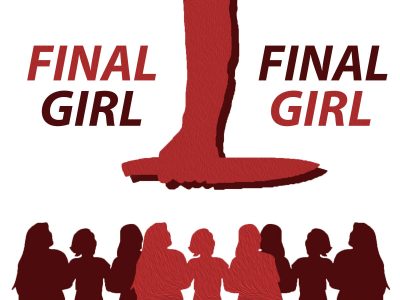She’s sitting in the bed of a speeding blue pickup truck, drenched in blood and laughing. All of her friends are dead but she’s a survivor — gory and triumphant. This is Sally Hardesty at the end of “The Texas Chainsaw Massacre,” my favorite final girl.
Most horror movies’ climaxes consist of a last protagonist left alive to confront the killer in a heart-racing showdown. In many cases, she is a woman, hence this trope’s name: the final girl.

The final girl can be seen in many popular horror movies, like Laurie in “Halloween,” Sidney in “Scream,” Ripley in “Alien,” and Karen in “The Grudge.” Some non-traditional final girl examples are “Midsommar” and “Jennifer’s Body.” Other films like “X” and “Pearl” have embraced the final girl trope, with the entire plot centered around her.
Carol Clover coined the term final girl in her 1992 book “Men, Women, And Chainsaws: Gender In The Modern Horror Film.” Now, not every woman in horror is a final girl. A final girl is often, but not always, the sole survivor, smart and curious, and refrains from illicit activities like drugs or sex. She’s commonly found in slasher movies, a gory genre of horror where a killer targets a group of people with bladed weapons.
So what does the final girl symbolize? The gray area in film between sexism and feminism.
It’s true that the final girl is rooted in sexism. Even though she survives, the fact that she’s often a prude implies that only women who abstain from sex or drugs are worthy of living. After all, the others in the movie who don’t abstain are brutally killed.
But there’s more to it than that. The final girl allows a shift in perspective. Throughout the movie, the plotline follows a group with a couple of standout characters who seem like the main protagonists.
The final girl is nothing special at first glance. She’s quieter, maybe a priss who refuses to partake in the debauchery. But as her friends and group mates are killed off one by one, the story shifts its focus to her.
I think the final girl is a symbol of empathy. We see her survive the physical and mental horror and sympathize with her plight. By the end, the wallflower is the one we’re rooting for, the one who puts up a fight with more adrenaline and grit than her peers.
The final girl centers a woman’s experience in a film where the main protagonists and antagonists are men. She forces the audience to view her experience, making them identify with her regardless of their gender. And as the sole survivor, she is the only one who can tell the story. This grants her the power to shape the narrative and gives her some of her agency back.
But the final girl is not without her scars. She undergoes a violent and traumatizing ordeal. Typically, the killer she’s up against is male and superior in strength. The scenes where he chases, catches or tortures her are difficult to watch for me and reminiscent of male violence against women.
For all her efforts, she is still a victim. She is punished by men, often for her male friends’ wrongdoings. Her suffering is made entertainment for a sadistic killer. It’s important to clarify that the final girl’s survival is not necessarily her victory.
As you can probably guess, I love the final girl trope — it is the namesake of this column, after all. For all her trauma and struggle, I think a good final girl elevates a film to a new level of spirit and tenacity. And that’s not to mention how cool she always looks at the end of the movie, bloody and grinning.














